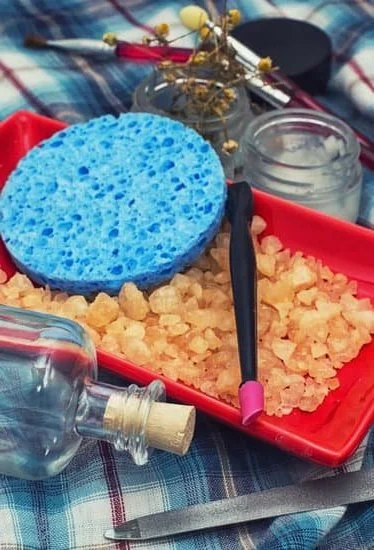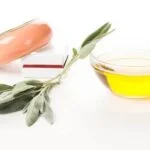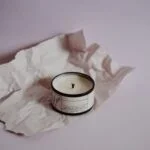Can you use aromatherapy oils on your hair? This question has been a topic of interest among hair care enthusiasts and those seeking alternative solutions for their hair woes. In this article, we will delve into the world of aromatherapy oils and explore their potential benefits for hair care. Whether you’re struggling with dryness, breakage, or simply want to enhance the health and appearance of your locks, aromatherapy oils might just be the solution you’ve been searching for.
Aromatherapy oils are unique in their composition and can offer various advantages over regular hair products. Traditional shampoos and conditioners often contain harsh chemicals that can strip away natural oils from our scalp and hair, leaving them dry and damaged. On the other hand, aromatherapy oils are derived from natural plant sources and are known for their nourishing properties. They can penetrate deep into the hair shaft, providing moisture, strength, and overall vitality to your strands.
But how do these aromatherapy oils work their magic on our hair? The science behind it lies in their molecular structure. Aromatherapy oils are composed of small molecules that can easily penetrate through the cuticle of our hair follicles. Once inside, they can deliver essential nutrients directly to the root, supporting healthy growth and preventing breakage. Additionally, these oils have antioxidant properties that combat free radicals and protect our hair from environmental damage.
In the following sections of this article, we will explore different aspects related to using aromatherapy oils for hair care. We will discuss how to select the right oil for your specific hair type, provide step-by-step guides on how to properly use them on your tresses, and highlight the numerous benefits they can offer – from promoting growth to adding moisture and luster.
Furthermore, we will address any concerns or risks associated with using these oils, as well as provide DIY recipes and techniques for optimal results. So, if you’ve been curious about incorporating aromatherapy oils into your hair care routine, keep reading to discover the secrets to healthy and gorgeous hair.
Understanding Aromatherapy Oils
Aromatherapy oils, also known as essential oils, have gained popularity in recent years as a natural and holistic approach to hair care. Unlike regular hair products, which are often filled with synthetic ingredients and chemicals, aromatherapy oils are derived from plants and contain a concentrated dose of their beneficial properties. This section will delve into the unique qualities that set aromatherapy oils apart from regular hair products.
One of the key differences between aromatherapy oils and regular hair products is their natural composition. Aromatherapy oils are extracted from various parts of plants – such as petals, leaves, bark, or roots – through processes like steam distillation or cold pressing. This extraction method ensures that the oil retains its natural properties and fragrance. On the other hand, regular hair products often contain artificial fragrances and synthetic ingredients that may strip the hair of its natural moisture and nutrients.
Another distinguishing factor is the versatility of aromatherapy oils. While regular hair products typically serve one specific purpose – such as shampooing or conditioning – aromatherapy oils can be used for multiple purposes due to their broad range of benefits. For example, some essential oils have moisturizing properties that can help combat dryness, while others have antibacterial qualities that can assist in treating scalp infections. This versatility makes aromatherapy oils a valuable addition to any hair care routine.
In addition to these differences, it is important to note that aromatherapy oils are highly concentrated substances that should be used with caution. Unlike regular hair products that can be freely applied in larger quantities, essential oils require proper dilution before use to avoid potential side effects such as skin irritation or allergic reactions. Each individual oil has its own recommended dilution rate, so it is crucial to follow guidelines carefully when incorporating them into your hair care regimen.
Overall, understanding the unique qualities that set aromatherapy oils apart from regular hair products is essential for anyone looking to explore this natural approach to hair care. From their natural composition to their versatility, aromatherapy oils offer a wide range of benefits that can help nourish and strengthen your hair in a holistic way.
| Aromatherapy Oils | Regular Hair Products |
|---|---|
| Derived from plants through natural extraction methods | Contain synthetic ingredients and chemicals |
| Versatile and can be used for multiple purposes | Serve one specific purpose (e.g., shampooing or conditioning) |
| Highly concentrated substances that require proper dilution | Can be freely applied without dilution |
The Science Behind Aromatherapy Oils
Aromatherapy oils have long been valued for their therapeutic properties, but their benefits extend beyond just relaxation and stress relief. These essential oils can also work wonders for our hair, nourishing and strengthening it from root to tip. The science behind aromatherapy oils lies in their unique chemical composition and how they interact with our hair strands.
Chemical Composition of Aromatherapy Oils
Aromatherapy oils are derived from various plants and flowers through a process known as distillation. This method captures the volatile aromatic compounds found in these natural ingredients, resulting in highly concentrated oils. These compounds include terpenes, alcohols, esters, ketones, and phenols – each contributing different qualities to the oil’s fragrance and therapeutic effects.
Interaction with Hair Strands
When applied to the hair, aromatherapy oils penetrate deeply into the hair shafts due to their small molecular size. This allows them to deliver nutrients and beneficial compounds directly to the hair follicles. Additionally, these oils can help regulate sebum production on the scalp, ensuring optimal moisture balance without excessive oiliness or dryness.
Moreover, certain aromatherapy oils possess antimicrobial properties that can combat common scalp issues like dandruff or fungal infections. By inhibiting bacterial or fungal growth, these oils promote a healthier environment for hair growth.
Another way aromatherapy oils benefit our hair is by enhancing blood circulation when massaged into the scalp. Increased blood flow nourishes the hair follicles with oxygen and nutrients necessary for healthy growth, promoting stronger strands and reducing hair loss.
Overall, the science behind aromatherapy oils underscores their ability to nourish and strengthen our hair at a cellular level. Understanding how these oils interact with our hair helps us make informed choices when selecting which ones to incorporate into our hair care routine.
Selecting the Right Aromatherapy Oil for Your Hair Type
Aromatherapy oils have gained popularity in recent years for their potential benefits in hair care. However, it is important to select the right aromatherapy oil that suits your specific hair type and addresses your individual concerns. With a wide variety of oils available in the market, it can be overwhelming to determine which one is best for you. This comprehensive guide will help you navigate through the different options and choose the perfect aromatherapy oil for your hair.
Firstly, it’s essential to identify your hair type before selecting an aromatherapy oil. Whether you have dry, oily, or damaged hair, there is an oil that can cater to your specific needs. For individuals with dry hair, essential oils such as lavender, geranium, or chamomile can provide moisture and nourishment. Those with oily hair may benefit from oils like tea tree, lemon, or peppermint which can regulate sebum production and provide a balancing effect.
Furthermore, take into account any specific concerns or issues you may have with your hair. If you struggle with dandruff or scalp irritation, consider using rosemary or eucalyptus essential oil that have soothing properties. For those who want to promote hair growth and strengthen their strands, oils such as cedarwood, clary sage, or ylang-ylang are known for stimulating circulation and enhancing follicle health.
When choosing an aromatherapy oil for your hair type, it is crucial to opt for high-quality products from reputable brands. Look for oils that are pure and organic without any artificial additives or synthetic fragrances. Reading customer reviews and seeking advice from professionals can also assist you in making an informed decision.
Step-by-Step Guide
Using aromatherapy oils on your hair can be a nourishing and rejuvenating experience. To properly use aromatherapy oils on your hair, follow these simple steps:
Step 1: Choose the Right Aromatherapy Oil
Before you begin, it’s important to select the right aromatherapy oil for your hair type. Different oils have different properties that can address specific hair concerns. For example, lavender oil is known for its calming effects and is great for sensitive scalps, while rosemary oil stimulates hair growth and is suitable for thinning hair. Research different oils and their benefits to determine which one will work best for you.
Step 2: Dilute the Oil
Aromatherapy oils are highly concentrated, so it’s crucial to dilute them before applying them to your hair. This can be done by mixing a few drops of the essential oil with a carrier oil such as coconut oil or jojoba oil. Use a ratio of about 5-10 drops of essential oil per tablespoon of carrier oil. This helps ensure that the essential oil is safely absorbed into your scalp without causing any irritation.
Step 3: Perform a Patch Test
Before applying the diluted aromatherapy oil to your entire head of hair, it’s recommended to perform a patch test first. Apply a small amount of the diluted mixture onto a small section of your scalp and leave it on for about 24 hours. If you experience any redness, itching, or discomfort, discontinue use immediately as it may indicate an allergic reaction.
Step 4: Apply the Oil
Once you’ve completed the patch test and are confident that you won’t experience any adverse reactions, it’s time to apply the aromatherapy oil to your hair. Begin by parting your hair into sections using a comb. Take a small amount of the diluted oil mixture and gently massage it into your scalp, working your way from the roots to the tips of your hair. Repeat this process until you have covered your entire scalp.
Step 5: Leave It On
After applying the aromatherapy oil to your hair, it’s important to leave it on for at least 30 minutes to allow it enough time to penetrate and nourish your hair follicles. For an even more intensive treatment, you can cover your head with a shower cap or warm towel to create a steam effect, which will help open up the hair cuticles and enhance absorption.
Step 6: Rinse and Shampoo
Once the desired amount of time has passed, rinse out the aromatherapy oil thoroughly with lukewarm water. Follow up with a gentle shampoo that is free from harsh chemicals and sulfates to remove any remaining residue. Be sure to rinse your hair well to ensure no oil is left behind.
By following these simple steps, you can enjoy the benefits of aromatherapy oils for your hair care routine. Remember to always start with a small amount of oil and gradually increase if needed, as some individuals may be more sensitive to certain oils than others. Experimenting with different oils and finding what works best for you can help transform your hair into healthy, lustrous locks.
Benefits of Aromatherapy Oils for Hair
Aromatherapy oils offer numerous benefits for promoting the growth, moisture, and luster of the hair. These natural oils are derived from plants and have been used for centuries for their therapeutic properties. When applied to the hair, aromatherapy oils can help improve hair health and appearance.
Promoting Hair Growth
One of the key benefits of using aromatherapy oils on your hair is their ability to promote hair growth. Certain essential oils, such as lavender oil and rosemary oil, have been found to stimulate hair follicles and increase blood circulation to the scalp, which can promote faster hair growth. These oils also have anti-inflammatory properties that can soothe an irritated scalp, reducing conditions like dandruff or itchiness that can hinder healthy hair growth.
Boosting Moisture
Aromatherapy oils are excellent natural moisturizers for the hair. They are rich in fatty acids and vitamins that nourish and hydrate the strands, preventing dryness and brittleness. Oils like argan oil and coconut oil are particularly effective at restoring moisture to the hair shafts, making them more resilient against damage caused by heat styling or environmental factors. Regular use of aromatherapy oils can help maintain optimal moisture levels in your hair, leaving it soft, smooth, and more manageable.
Enhancing Luster
Another advantage of using aromatherapy oils on your hair is their ability to enhance its luster and shine. The molecular structure of these oils allows them to penetrate deep into the hair shafts, replacing lost lipids and sealing in moisture.
This not only strengthens the strands but also makes them smoother, resulting in a reflective surface that catches light more effectively. Oils like jojoba oil and avocado oil are known for their ability to impart a natural sheen to dull or lackluster hair.
Potential Concerns and Risks
Aromatherapy oils can be highly beneficial for hair care, but it is important to be aware of potential concerns and risks associated with their use. While generally safe, it is crucial to take certain safety measures and precautions to avoid any adverse reactions or allergies.
- Conduct a Patch Test: Before using any aromatherapy oil on your hair, it is recommended to perform a patch test. This involves applying a small amount of the oil on a small section of your skin, such as the inner arm or behind the ear. Leave it for 24 hours and monitor for any allergic reactions, such as redness, itching, or irritation. If any reaction occurs, refrain from using that particular oil.
- Dilution: Aromatherapy oils are highly concentrated substances and should not be applied directly onto the scalp or hair without diluting them first. Dilute the oil in a carrier oil like coconut oil or almond oil before applying it onto your hair. The ideal ratio for dilution is usually around 2-3 drops of essential oil per tablespoon of carrier oil.
- Allergies and Sensitivities: Some individuals may have allergies or sensitivities to certain aromatherapy oils. It is important to research and identify any potential allergens in the specific oil you plan on using. Additionally, be cautious if you have sensitive skin or scalp conditions like eczema or psoriasis which may react adversely to certain oils.
- Pregnancy and Medical Conditions: Certain aromatherapy oils are known to be contraindicated during pregnancy or for individuals with specific medical conditions such as epilepsy or high blood pressure. If you are pregnant or have a medical condition, consult with a healthcare professional before incorporating aromatherapy oils into your hair care routine.
Following these safety measures will help mitigate any potential risks associated with using aromatherapy oils on your hair. It is always better to err on the side of caution and take the necessary precautions to ensure a positive and safe experience.
DIY Aromatherapy Oil Hair Treatments
As more people are looking for natural and holistic remedies for hair care, DIY aromatherapy oil hair treatments have become increasingly popular. These treatments offer a range of benefits, including promoting hair growth, moisture, and luster. In this section, we will explore some effective recipes and techniques you can use to get optimal results from using aromatherapy oils on your hair.
One of the simplest and most versatile ways to incorporate aromatherapy oils into your hair care routine is by creating a customized oil blend. Start by selecting a carrier oil that suits your hair type and needs, such as jojoba oil for dry hair or coconut oil for damaged hair.
Then, add a few drops of essential oils that address specific concerns like lavender for scalp health or rosemary for stimulating hair growth. Mix the oils together thoroughly and store the blend in a dark glass bottle.
To use the DIY aromatherapy oil blend, start by heating it slightly until it becomes warm but not hot. Apply a small amount to your fingertips and massage it gently into your scalp using circular motions. This will help stimulate blood flow to the hair follicles and promote healthier growth. Afterwards, work the remaining oil through the lengths of your hair, focusing on the ends which tend to be drier.
In addition to custom blends, there are also specific recipes you can try depending on your desired outcome. For example, if you want to improve the overall condition and shine of your hair, mix equal parts of argan oil and rosehip seed oil with a teaspoon of vitamin E oil. Apply this mixture evenly throughout damp or dry hair and cover with a shower cap for at least 30 minutes before rinsing out thoroughly.
By experimenting with different combinations and techniques, you can discover what works best for your unique hair type and concerns. Remember to always patch test any new ingredients beforehand to check for allergies or adverse reactions. With consistent use and proper application methods, DIY aromatherapy oil hair treatments can be a valuable addition to your hair care routine, helping you achieve healthy and gorgeous locks that are nourished from the inside out.
Incorporating Aromatherapy Oils into Your Hair Care Routine
Using aromatherapy oils in your hair care routine can be a wonderful way to promote healthy and gorgeous hair. Once you have selected the right oil for your hair type and learned how to properly use it, there are several tips and tricks that can help you experience the long-term benefits of aromatherapy oils.
Firstly, consistency is key. To effectively incorporate aromatherapy oils into your hair care routine, it is important to use them regularly. Consistency allows the oils to deeply penetrate the hair shaft and provide nourishment over time. Whether you choose to use aromatherapy oils as a pre-shampoo treatment, a leave-in conditioner, or a scalp massage oil, make sure to create a routine that works for you and stick with it.
Another tip is to experiment with different application methods. While some people prefer applying aromatherapy oils directly onto their scalp and hair, others find it more effective to dilute the oil in a carrier oil or mix it into their shampoo or conditioner. It is worth trying out different techniques to see which one works best for your hair type and desired results.
Additionally, combining aromatherapy oils with other natural ingredients can enhance their effectiveness. For example, adding a few drops of lavender oil to coconut oil can create an even more nourishing blend for dry or damaged hair. Similarly, mixing rosemary oil with jojoba oil can stimulate the scalp and promote hair growth. Don’t be afraid to get creative and experiment with different combinations that work best for your specific needs.
Overall, incorporating aromatherapy oils into your hair care routine requires patience, consistency, and experimentation. By following these tips and tricks, you can maximize the benefits of these powerful natural remedies and achieve healthier and more beautiful hair.
| Tips and Tricks for Long-Term Use |
|---|
| 1. Be consistent in using aromatherapy oils to allow them to deeply nourish and strengthen your hair over time. |
| 2. Experiment with different application methods such as direct application, dilution in a carrier oil, or mixing into your shampoo or conditioner. |
| 3. Combine aromatherapy oils with other natural ingredients like coconut oil or jojoba oil to enhance their effectiveness. |
Conclusion
In conclusion, incorporating aromatherapy oils into your hair care routine can have numerous benefits for promoting healthy and gorgeous hair. Their unique properties set them apart from regular hair products, providing nourishment and strength to the hair follicles. By selecting the right oil for your specific hair type, you can optimize the results and address any concerns or issues you may have.
Using aromatherapy oils on your hair requires a proper understanding of how to apply them effectively. Following a step-by-step guide will ensure that you are using the oils correctly and maximizing their potential. Whether it is through massage, scalp treatments, or homemade hair masks, there are various techniques and recipes available for optimal results.
One of the main benefits of using aromatherapy oils on your hair is their ability to promote growth, moisture, and luster. Regular use can significantly improve the overall condition of your hair, making it shinier, softer, and more manageable. Additionally, these oils can also address specific concerns such as dryness, frizz, or dandruff.
It is important to note that while aromatherapy oils have numerous benefits, individuals should be aware of potential risks and concerns. Safety measures should always be followed, such as diluting essential oils before use and conducting a patch test to check for allergies or sensitivities. By being mindful of these potential risks, you can safely incorporate aromatherapy oils into your hair care routine.
Overall, harnessing the power of aromatherapy oils can be a game-changer when it comes to achieving healthy and gorgeous hair. By understanding their properties and selecting the right oil for your needs, following proper application techniques, and addressing safety measures, you can experience all the amazing benefits they have to offer. So go ahead and give aromatherapy oils a try – your hair will thank you.
Frequently Asked Questions
Can aromatherapy essential oil be used for hair?
Aromatherapy essential oils can indeed be used for hair care. Many essential oils, such as lavender, rosemary, and peppermint, have beneficial properties that can promote healthy hair and scalp. These oils are often used in hair care products or can be added to carrier oils or shampoos for direct application to the hair and scalp.
For example, lavender oil has soothing properties that may help with an itchy scalp, while rosemary oil is believed to stimulate hair growth and improve overall hair health. However, it’s important to remember that essential oils are highly concentrated substances and should be diluted properly before use on the hair.
Can you apply essential oils directly to hair?
While it is generally safe to apply essential oils directly to the hair under certain circumstances, it is recommended to dilute them with a carrier oil or other substance first. Applying undiluted essential oils directly to the scalp or hair can cause irritation or sensitization, especially for those with sensitive skin or allergies.
Carrier oils such as coconut oil or jojoba oil not only help dilute the essential oil but also provide additional nourishment and moisturization for the hair. It’s always best to do a patch test on a small area of skin before applying any essential oil directly to ensure there are no adverse reactions.
Are aromatherapy oils the same as essential oils?
Aromatherapy oils and essential oils are often used interchangeably; however, they technically refer to different things. Aromatherapy oils are commonly blends of different essential oils with carrier bases such as almond oil or grape seed oil specifically designed for aromatherapy purposes. They may contain other ingredients like vitamin E or herbal extracts depending on their intended use.
On the other hand, essential oils are highly concentrated plant extracts obtained through various extraction methods like steam distillation or cold-pressing of plant parts like flowers, leaves, bark etcetera. Essential oils have a wide range of therapeutic benefits and can be used both topically and through inhalation in aromatherapy practices. So while all essential oils can be used for aromatherapy, not all aromatherapy oils are solely made up of essential oils.

Are you looking for a natural way to improve your health and wellbeing?
If so, aromatherapy may be the answer for you.





